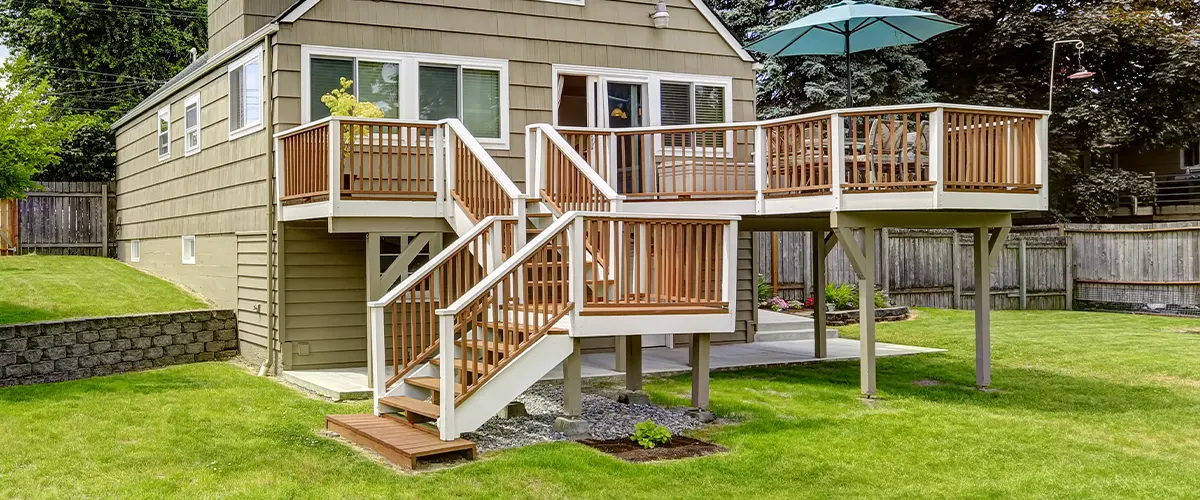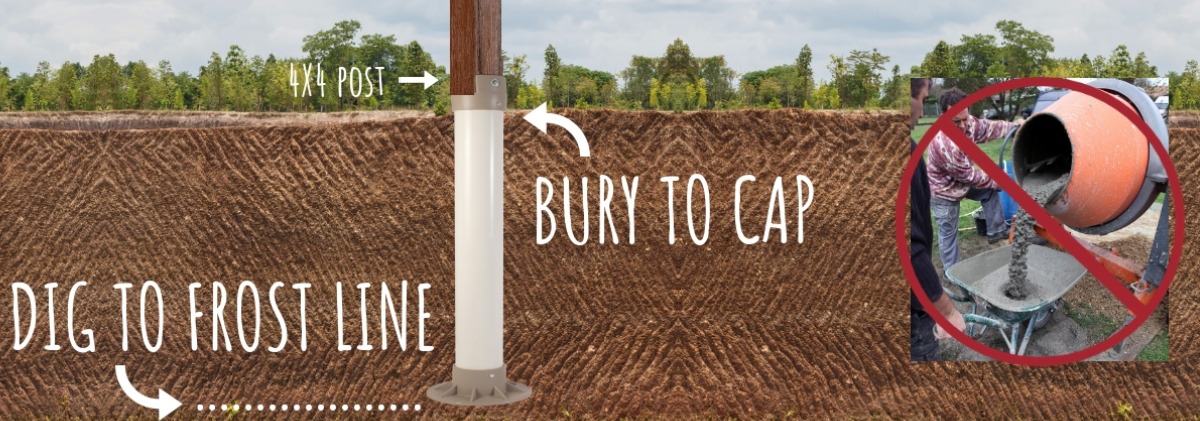Guarantee Stability and Durability With Properly Installed Deck Footings
Deck grounds might not be the most glamorous aspect of deck building, yet they play an essential function in making sure stability and longevity. In this discussion, we will explore the value of appropriate deck footings, elements to think about during setup, various kinds of grounds available, detailed setup guide, and maintenance suggestions for making certain durable footings.

Value of Appropriate Deck Footings
Why are appropriately mounted deck footings crucial for the security and long life of your deck? Deck grounds are the structure on which the deck rests, transferring the tons from the deck to the ground.
To start with, effectively set up deck grounds distribute the weight of the deck uniformly, preventing any type of irregular settling or sinking. This is particularly important in locations with unsteady soil, as it assists to reduce the risk of the deck falling down or shifting. In addition, well-installed grounds make sure that the deck stays level, avoiding any architectural damage that can occur when a deck ends up being irregular.
Second of all, correctly installed grounds supply a solid support for the deck, stopping extreme movement and sway. This helps to keep the structural integrity of the deck, lowering the danger of injuries or crashes. It likewise reduces the wear and tear on the deck, enabling it to stand up to the aspects and normal use for a longer amount of time.
Elements to Think About for Deck Footing Setup
When installing deck grounds, there are numerous crucial factors to think about for proper installation. Various soil types have various load-bearing capabilities, so it is important to perform a dirt examination to make certain the grounds can support the weight of the deck and its owners. By taking into account these aspects, you can make certain the correct setup of deck grounds and take pleasure in a steady and lasting deck.
Kinds of Deck Grounds to Pick From
There are a number of different kinds of deck grounds offered for you to pick from. Each kind has its own advantages and disadvantages, so it's vital to consider your particular needs and the problems of your deck prior to choosing.
One usual kind of deck ground is the concrete footing. This entails digging openings in the ground and putting concrete into them to create a solid structure. Concrete grounds are durable and offer outstanding stability, making them appropriate for decks in areas with difficult dirt problems or high wind loads.
Another choice is the helical pier footing, which includes a steel shaft with helical plates that are screwed into the ground. These footings are quick to install and can be made use of in different soil kinds, including sandy or clay dirts. They are likewise adjustable, enabling very easy progressing of the deck.
Sonotube grounds are another preferred selection. These grounds are developed by placing a cardboard tube in a hole and filling it with concrete. Sonotube footings are fairly simple to mount and supply appropriate stability for smaller decks or in locations with much less requiring dirt problems.

When selecting the kind of deck footing, it's vital to think about factors such as dirt problems, deck size and weight, neighborhood structure codes, and individual choices. By selecting the appropriate footing kind, you can make sure the security and durability of your deck.
Step-by-Step Guide for Setting Up Deck Footings

Determine the location: Begin by marking the precise placement of each ground using risks and string (Deck Footings). Consider any local building ordinance or policies concerning problem ranges
Dig the holes: Use an article opening digger or an auger to dig the openings for the footings. The deepness will depend upon the frost line in your area and the kind you can try here of soil. Typically, a deepness of at the very least 36 inches is advised for stability.
Degree the openings: Make sure that the bottoms of the holes are degree (Deck Footings). This can be accomplished by utilizing a level or a straight board across the top of the holes
Add gravel: Place a layer of gravel at the bottom of each opening to enhance water drainage and protect against the footing from sinking into the soil gradually.
Put the ground kinds: Insert the ground forms right into the holes, ensuring they are centered and degree. Use stakes to secure them in position.
Mix and pour concrete: Follow the directions on the concrete mix bag to prepare the concrete. Put the concrete into the footing types, loading them completely.
Smooth the surface: Make use of a trowel to smooth the surface of the concrete and get rid of any type of air pockets. Allow the concrete to cure according to the producer's instructions.
Upkeep Tips for Long-lasting Deck Grounds
Appropriate upkeep is important for ensuring the durability and stability of deck grounds. By regularly checking and preserving your deck grounds, you can protect against damages and prospective safety and security hazards. One essential aspect of maintenance is to consistently look for any type of indications of wear and tear, such as fractures or motion in the footings. It is essential to address them quickly to stay clear of additional damage. if you discover any concerns.
Routine cleansing is additionally crucial for preserving deck footings. Particles, dirt, and vegetation can accumulate around the footings, which can bring about moisture buildup and decay. Cleansing the grounds frequently, using Visit This Link a stress or a brush washing machine, can assist protect against these issues and prolong the life-span of your deck.
In addition to cleansing, it is essential to keep the location around the grounds clear of any kind of obstructions. Prevent piling items against the grounds or permitting plants to grow too near to them. These blockages can catch moisture and create the footings to degrade gradually.
Lastly, routine resealing of the grounds is recommended to secure them from dampness and other environmental aspects. Using a waterproof sealant can assist stop water damages and extend the life-span of the grounds.
Verdict
Finally, appropriate setup of deck grounds is crucial for guaranteeing security and durability of your deck. Aspects such as dirt kind, lots capacity, and regional building codes need to be thought about when choosing the right kind of deck grounds. Following a step-by-step overview for installment and routine maintenance will certainly aid to make sure the footings remain durable and long lasting.
In this discussion, we will discover the value of proper deck grounds, elements to think about during installation, different types of grounds available, detailed installation guide, and maintenance ideas for guaranteeing resilient grounds. Deck footings are the foundation on which the deck rests, moving the tons from the deck to the ground.One usual kind of deck footing is the concrete ground. Insert the ground forms: Put the footing creates into the openings, ensuring they are focused and level.In verdict, correct installation of deck grounds is crucial for making certain stability and long life of your deck.